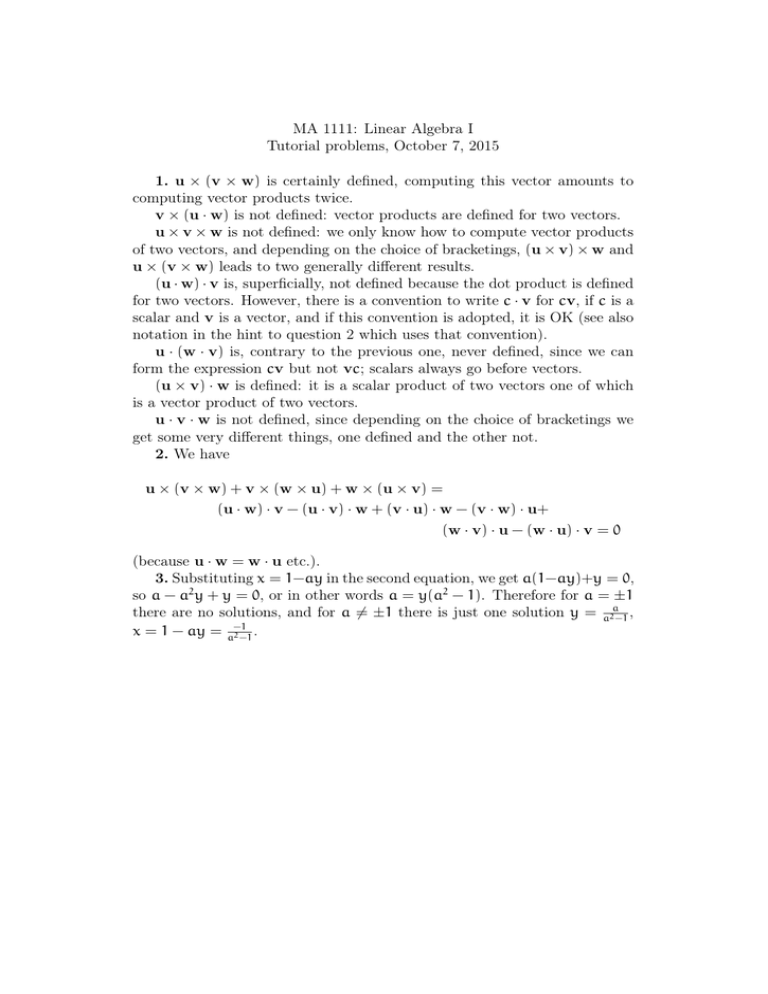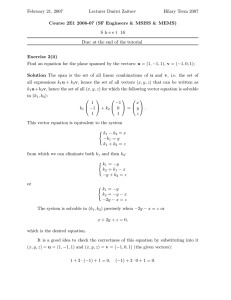MA 1111: Linear Algebra I Tutorial problems, October 7, 2015
advertisement

MA 1111: Linear Algebra I Tutorial problems, October 7, 2015 1. u × (v × w) is certainly defined, computing this vector amounts to computing vector products twice. v × (u · w) is not defined: vector products are defined for two vectors. u × v × w is not defined: we only know how to compute vector products of two vectors, and depending on the choice of bracketings, (u × v) × w and u × (v × w) leads to two generally different results. (u · w) · v is, superficially, not defined because the dot product is defined for two vectors. However, there is a convention to write c · v for cv, if c is a scalar and v is a vector, and if this convention is adopted, it is OK (see also notation in the hint to question 2 which uses that convention). u · (w · v) is, contrary to the previous one, never defined, since we can form the expression cv but not vc; scalars always go before vectors. (u × v) · w is defined: it is a scalar product of two vectors one of which is a vector product of two vectors. u · v · w is not defined, since depending on the choice of bracketings we get some very different things, one defined and the other not. 2. We have u × (v × w) + v × (w × u) + w × (u × v) = (u · w) · v − (u · v) · w + (v · u) · w − (v · w) · u+ (w · v) · u − (w · u) · v = 0 (because u · w = w · u etc.). 3. Substituting x = 1−ay in the second equation, we get a(1−ay)+y = 0, so a − a2 y + y = 0, or in other words a = y(a2 − 1). Therefore for a = ±1 there are no solutions, and for a 6= ±1 there is just one solution y = a2a−1 , x = 1 − ay = a−1 2 −1 . 4. (a) (b) (e) (c) (f) (d) (g) (h) the transformation is (x, y) 7→ (1 − x, y).


